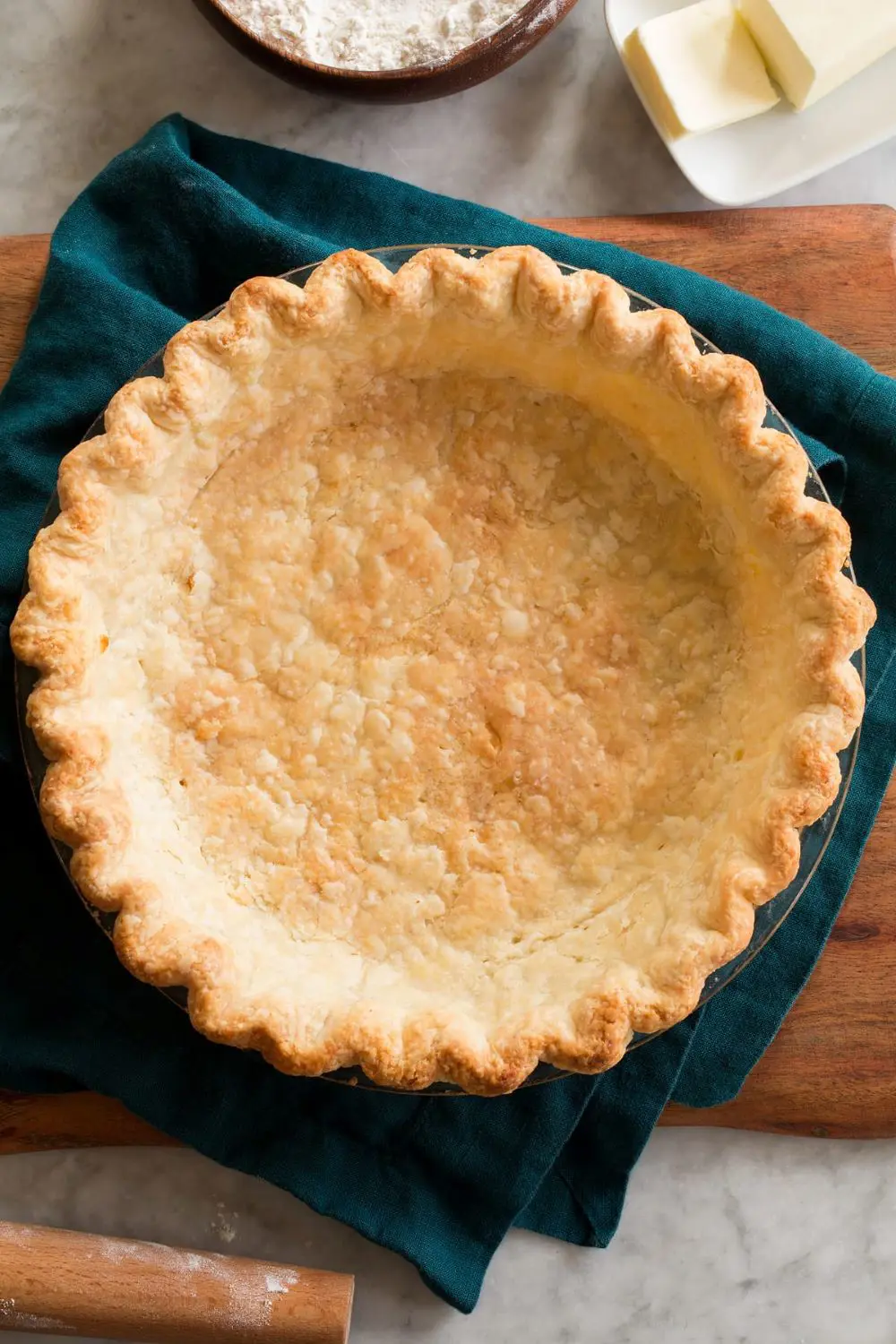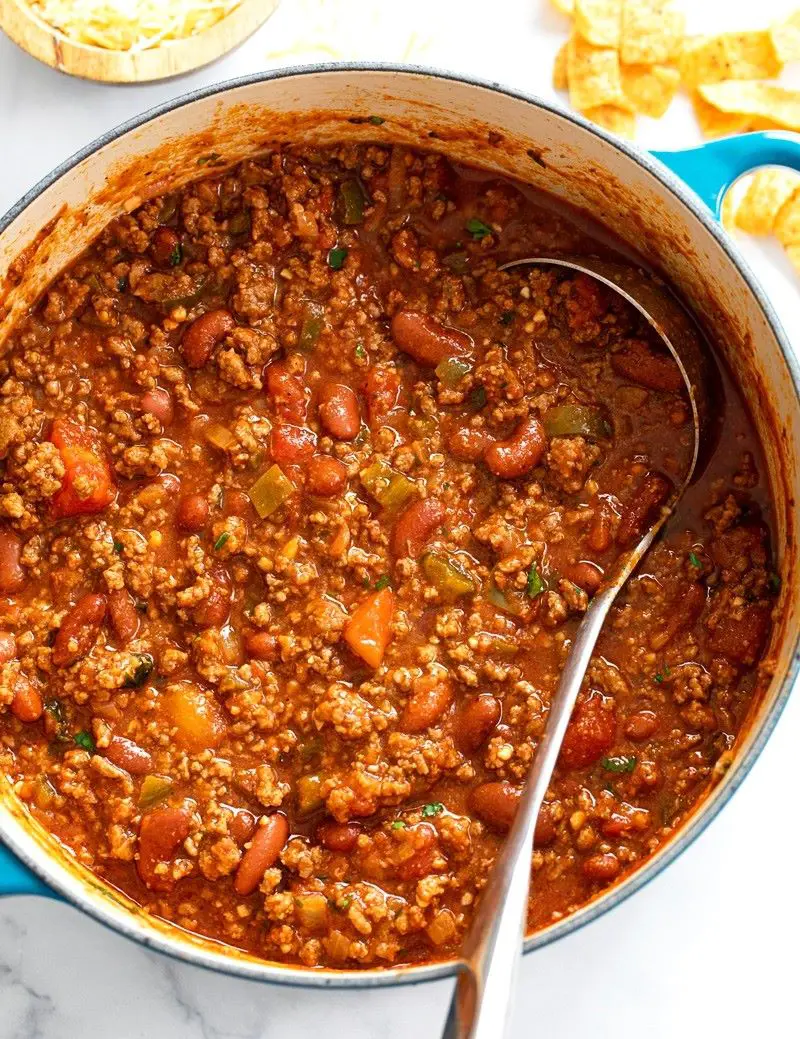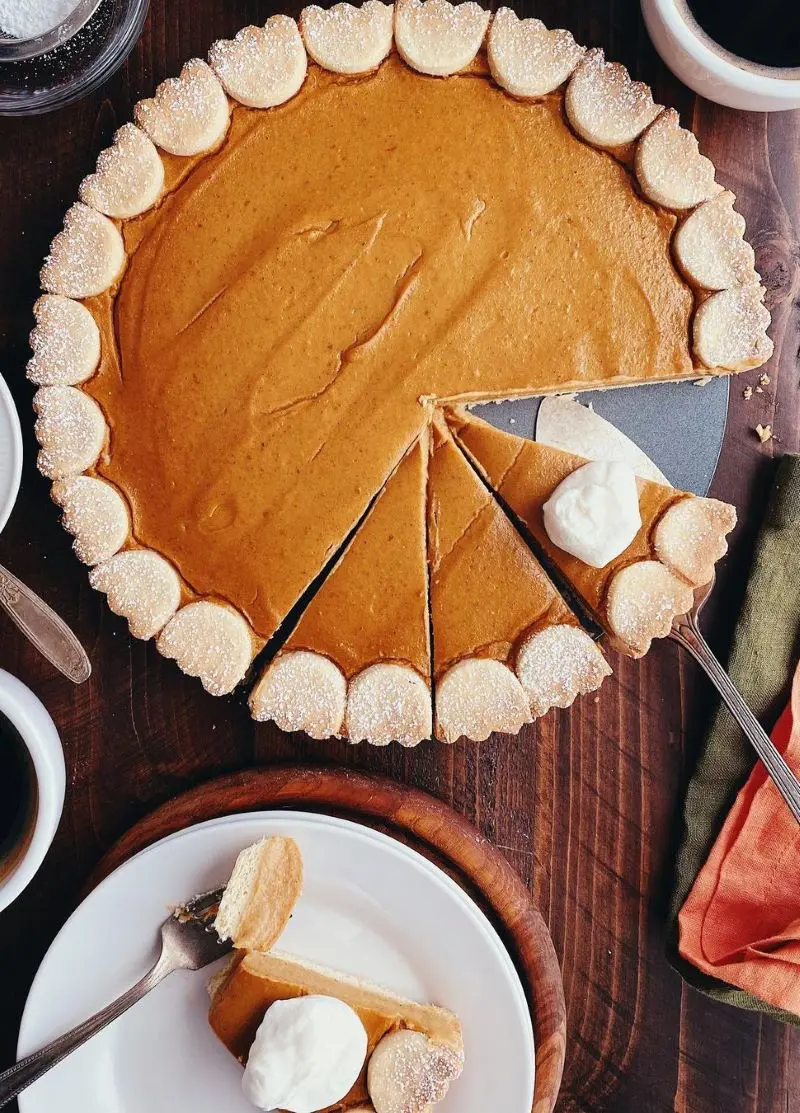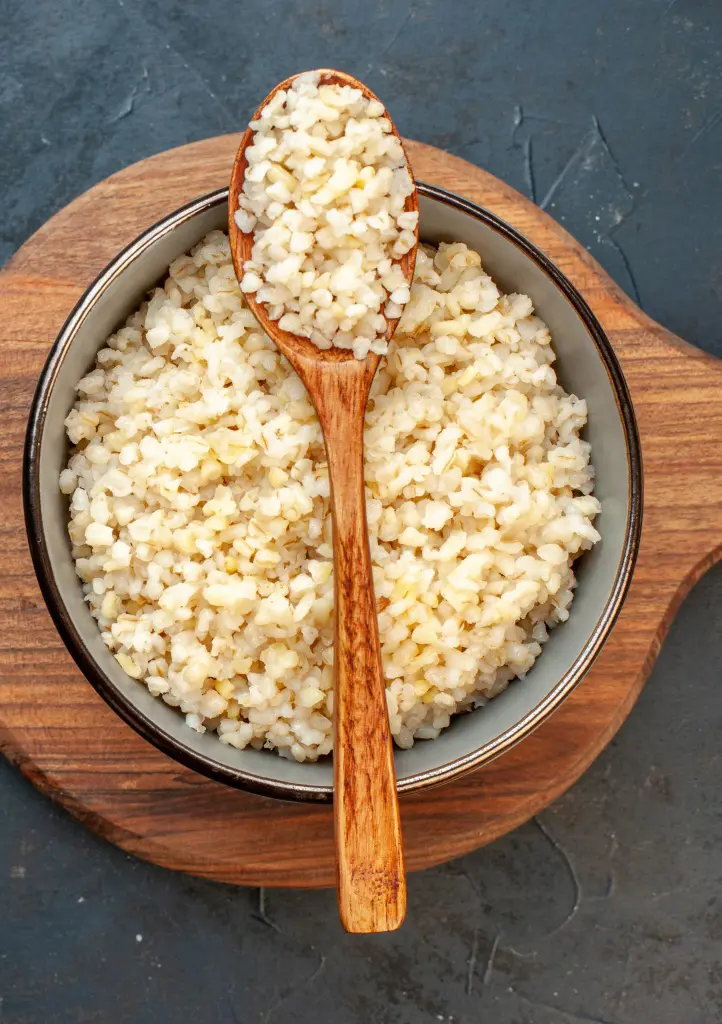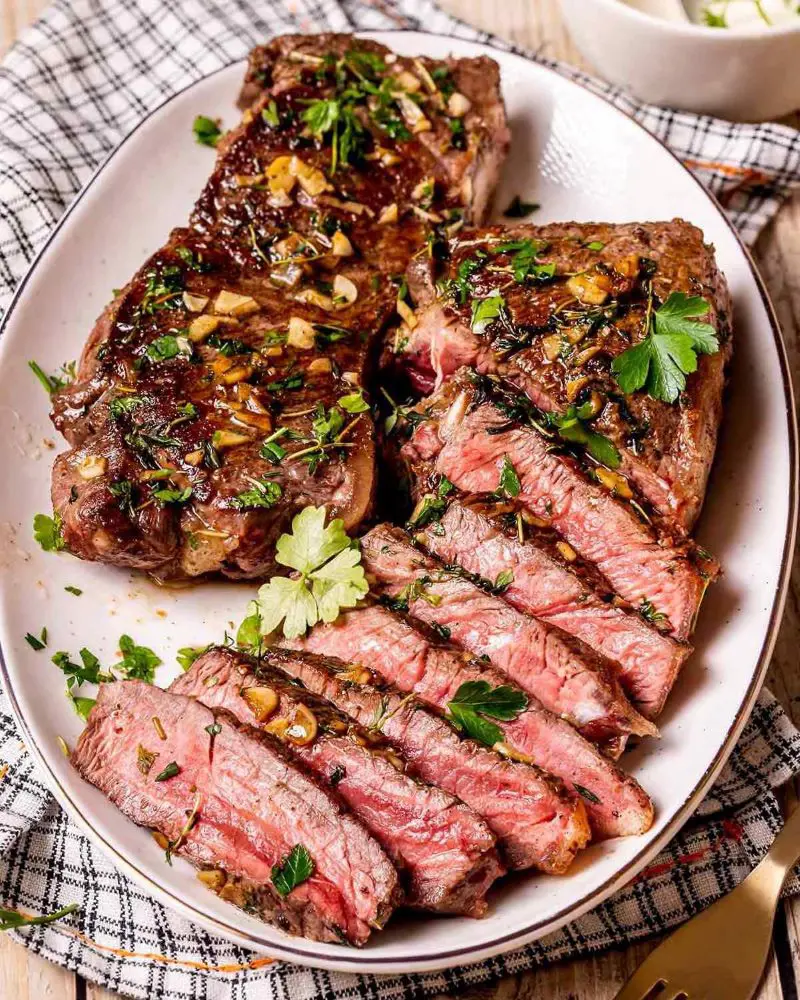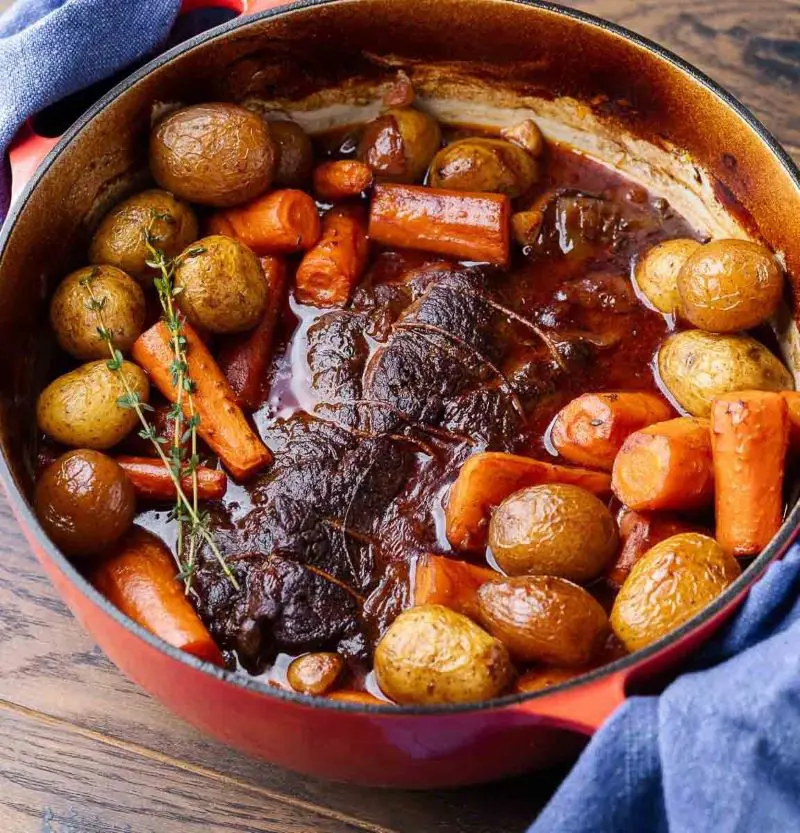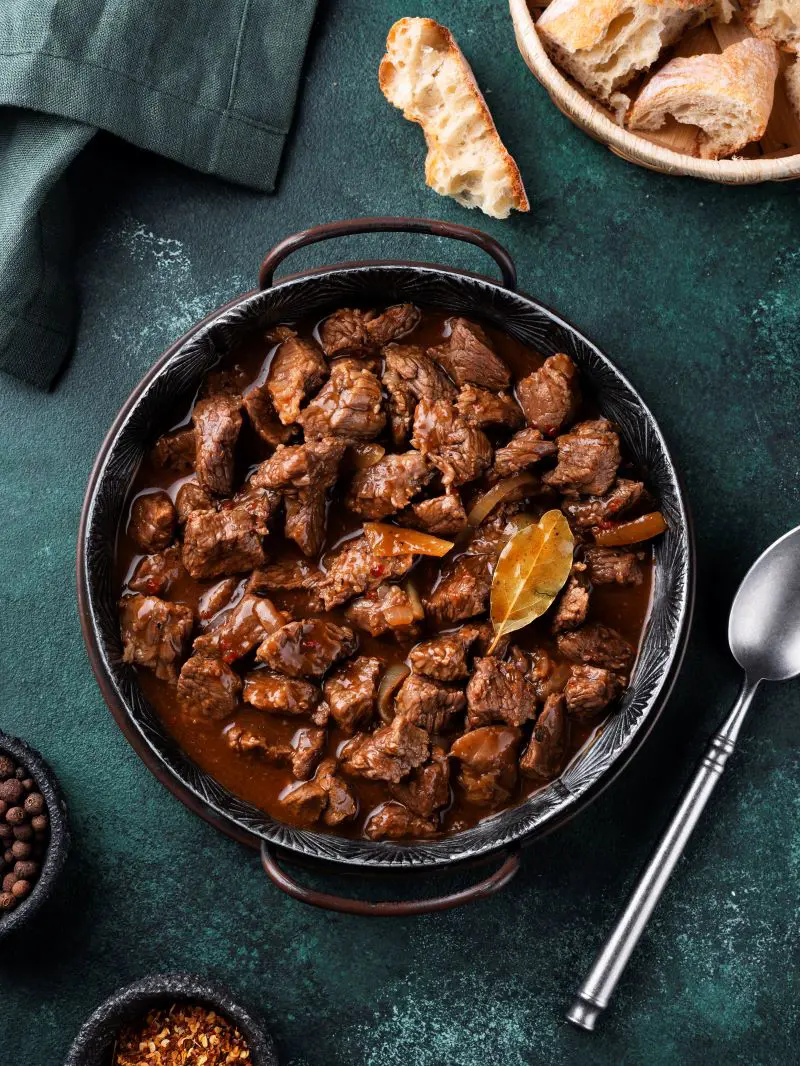A pie crust is more than just delicious ingredients; it's a key part of many beloved recipes that have been passed down through generations. Classic dishes like quiches and sweet pies all start with a great pie crust. Mastering this skill opens up a whole world of baking possibilities.
Whether you’re making apple pie, banana cream pie, or an egg and cheese pie, the quality of the crust can make big difference. To achieve that perfect flaky, homemade texture, follow this guide on how to bake pie crust.
What You'll Need To Make Pie Crust
To make a perfect pie crust, you'll only need a few basic ingredients that are readily available. Here is a description of what you'll need to make a pie crust:
Flour

Flour is the main ingredient in pie crust. It provides the structure and texture. When mixed with fat, it forms a dough that can be rolled out. Use all-purpose flour for a standard pie crust. Make sure to measure it accurately and mix it gently to avoid a tough crust.
Salt
Salt adds flavor to the pie crust. It enhances the taste and balances the sweetness if you add sugar. Just a small amount is needed. Mix it into the flour before adding the fat to ensure it's evenly distributed.
Sugar (Optional)
Sugar (Optional): Sugar can be added to the pie crust if you want a slightly sweet flavor. It's especially useful for sweet pies like apple or peach. Add sugar to the flour mixture and mix well. You can adjust the amount based on your taste preference.
Butter
Butter provides a rich, delicious flavor and helps create a flaky texture. It should be cold when you add it to the flour. Cut the butter into small pieces and work it into the flour until the mixture resembles coarse crumbs. This helps achieve a tender crust.
Vegetable Shortening
Shortening makes the pie crust tender and flaky. It has a higher fat content than butter, which helps create a lighter texture. Like butter, it should be cold. Cut it into the flour with a pastry cutter or your fingers until the mixture is crumbly.
Ice Water
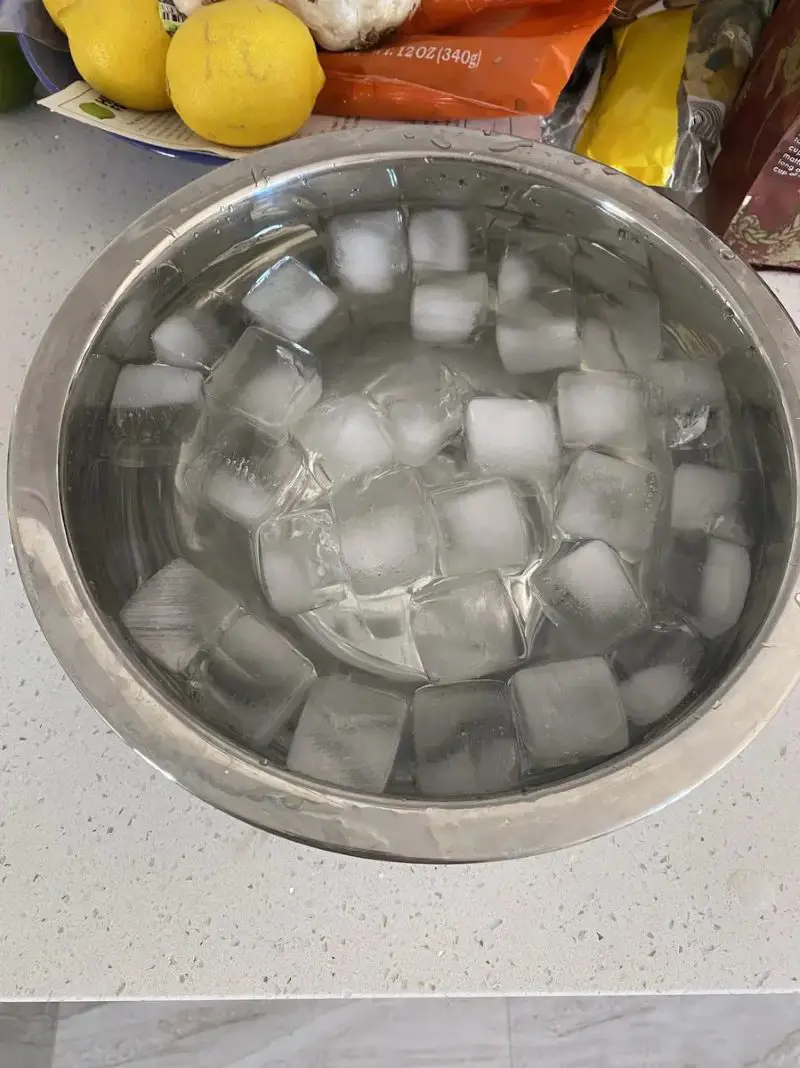
Ice water helps bring the dough together without warming it up. The cold water prevents the fat from melting and keeps the dough from becoming too sticky. Add a little ice water at a time and mix until the dough just holds together. Be careful not to add too much water, as it can make the dough tough.
Some recipes use a mix of water and vodka because alcohol doesn’t cause gluten to form, keeping the crust flaky and tender. It’s especially helpful if you accidentally overwork the dough.
The Key to a Perfect Pie Crust: Keep It Cold
The key to a perfect pie crust is keeping everything cold. When the ingredients and tools are chilled, the fat in the crust stays solid, creating a flaky texture. Cold fat, like butter or shortening, helps the dough stay light and tender by forming little pockets of air. If the dough warms up too much, the fat melts, leading to a tough crust.
To prevent this, chill your ingredients and work quickly. If needed, refrigerate the dough before rolling it out. Using ice water also helps keep the dough cool and ensures a better texture. By keeping everything cold, you’ll achieve a pie crust that’s deliciously flaky and just right.
Tools Required
Now that you have all the ingredients for your pie crust, it's time to get the tools. Using the right tools can greatly impact the texture and flavor of your crust.
Here’s a list of essential tools to help you make a perfect pie crust:
- Mixing bowls:
- Large Mixing Bowl: For combining the flour, salt, and sugar with the fats.
- Medium Mixing Bowl: Useful for mixing or holding smaller amounts of ingredients, such as ice water.
- Pastry cutter or food processor: Pastry cutter to cut butter and shortening into the flour. A food processor to blend the fats into the flour more quickly and efficiently, but it’s optional.
- Rolling pin: For rolling out the dough evenly.
- Pie dish (9-inch standard): Use a glass or metal dish, depending on your preference for browning and crispness.
- Fork: For docking the dough.
- Sharp knife or kitchen shears: Trim the dough cleanly around the edges of the pie dish.
- Pastry Brush (Optional): Apply an egg wash or water to the crust for a shiny, golden finish.
- Pie weights or dried beans (for blind baking): To weigh down the crust and prevent it from puffing up or shrinking during blind baking.
- Parchment paper or aluminum foil: To line the crust before adding pie weights.
How to Bake Pie Crust
Ingredients
- 1 ¼ cups all-purpose flour (plus extra for rolling out the dough)
- ½ teaspoon salt
- 1 tablespoon sugar (optional, for a slightly sweet crust)
- ¼ cup (½ stick) unsalted butter, cold and cut into small cubes
- ¼ cup vegetable shortening, cold and cut into small cubes
- 3-4 tablespoons ice water
Instructions
Step 1: How Do You Make Pie Dough
Combine Dry Ingredients: In a large mixing bowl, whisk together the flour, salt, and sugar (if using). This ensures the salt and sugar are evenly distributed throughout the flour.
Cut in the Fats: Add the cold, cubed butter and vegetable shortening to the flour mixture. Use a pastry cutter or your fingers to cut the fats into the flour until the mixture resembles coarse crumbs with some pea-sized pieces of butter and shortening. This ensures a flaky, tender crust.
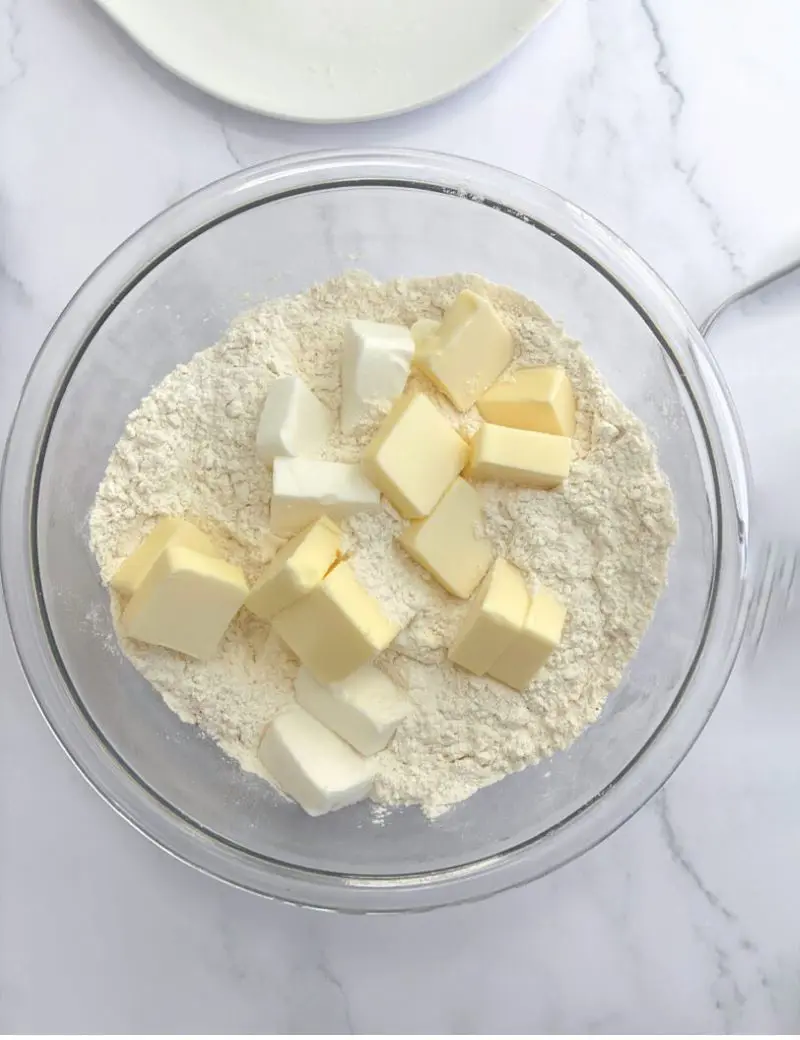
Add Ice Water: Sprinkle 3 tablespoons of ice water over the flour mixture. Gently toss with a fork until the dough starts to come together. If needed, add more water, a little at a time, until the dough holds together when pressed. The dough should be slightly crumbly but cohesive.
Form the Dough Disk: Turn the dough out onto a lightly floured surface. Gather it into a ball, then flatten it into a disk about 1 inch thick. Wrap the dough disk in plastic wrap and refrigerate for at least 30 minutes (or up to 2 days). Chilling the dough helps keep the fats solid, which is key to achieving a flaky crust.
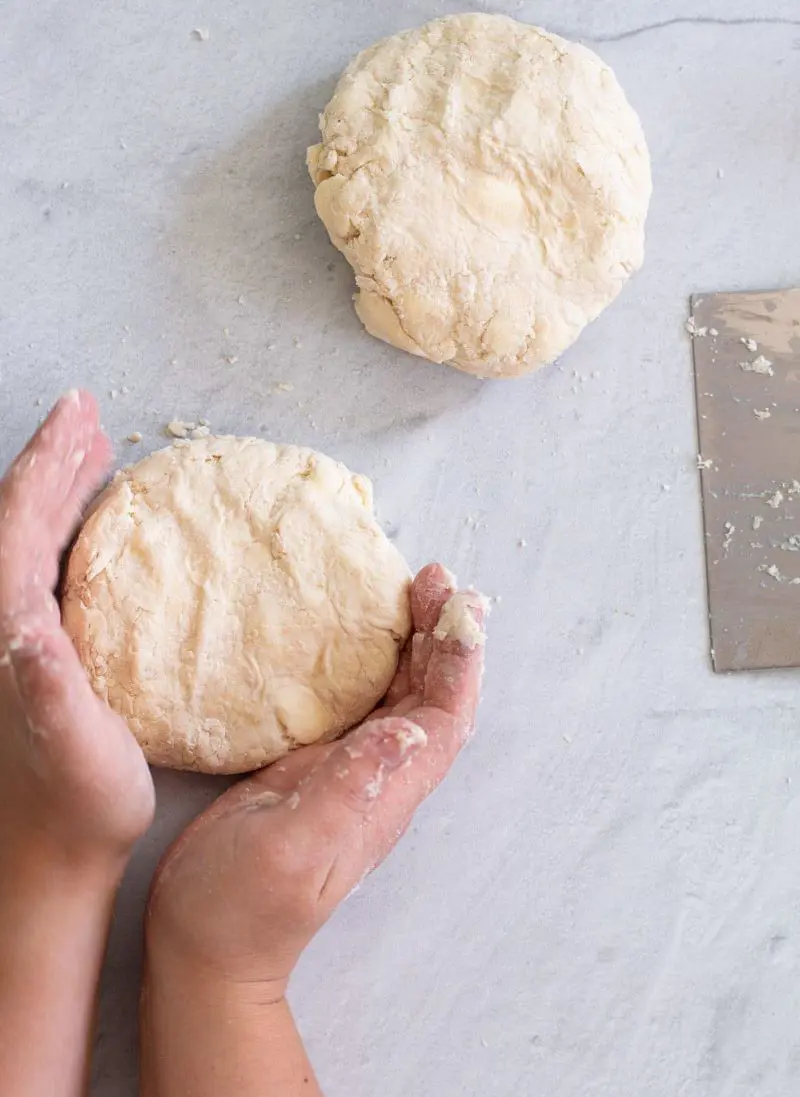
Step 2: Roll Out the Dough
Prepare Your Surface: Lightly flour your work surface and rolling pin.
Roll the Dough: Place the chilled dough on the floured surface. Starting from the center, roll the dough outward, turning it a quarter turn every few rolls to maintain an even thickness. Roll the dough into a circle about 12 inches in diameter and about ⅛ inch thick. This will fit a 9-inch pie dish with some overhang.
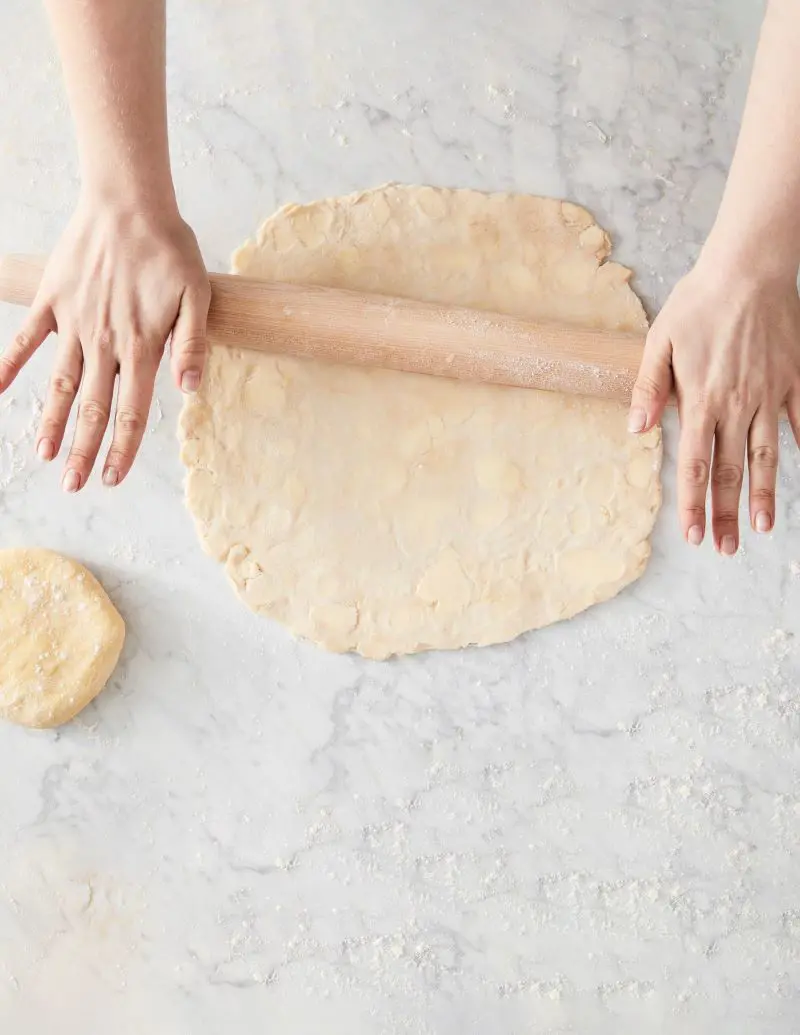
Transfer to Pie Dish: Gently fold the dough in half or drape it over your rolling pin to transfer it to the pie dish. Unfold or unroll the dough into the dish, pressing it gently into the corners and up the sides.
Trim and Crimp the Edges: Trim the excess dough, leaving about a 1-inch overhang. Tuck the overhang under itself to form a thick edge, then crimp or flute the edges as desired. This creates a neat, decorative edge that will also help hold in the filling.
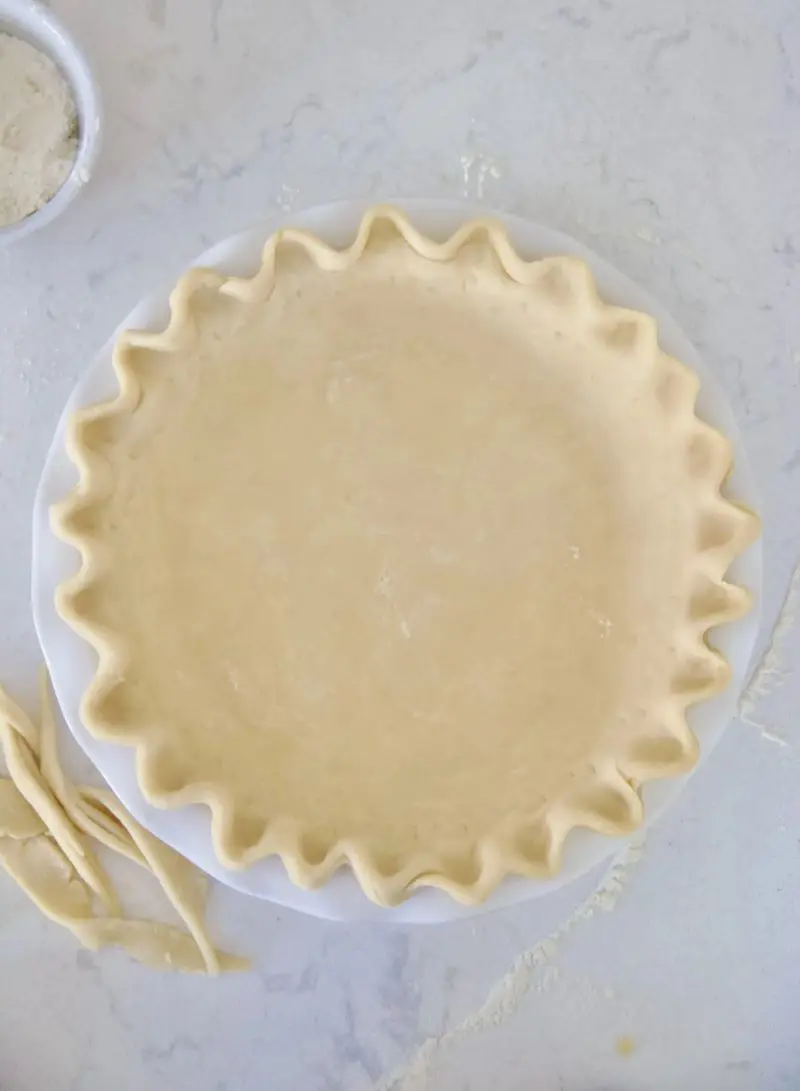
Step 3: Add Filling and Bake
Add Your Filling: Once the dough is in the pie dish, add your chosen filling. Whether it's a fruit filling, custard, or savory mixture, make sure it's evenly distributed.
Apply an Egg Wash (Optional): If you’d like a shiny, golden crust, you can brush the top edge of the crust with an egg wash (1 beaten egg mixed with 1 tablespoon of water).

Bake the Pie: Place the pie in the preheated oven, typically at 350°F to 375°F (175°C to 190°C), depending on your recipe. Bake according to the filling's baking instructions, usually between 45 minutes to 1 hour. If the edges start to brown too quickly, cover them with aluminum foil or a pie shield to prevent burning.
Cool and Serve: Once baked, remove the pie from the oven and let it cool on a wire rack. This allows the filling to set and makes slicing easier.
How To Blind Bake Pie Crust
Blind baking is the process of pre-baking the pie crust before adding the filling. It’s essential for pies with no-bake fillings, like cream pies, or for pies with fillings that cook faster than the crust, like quiches. Blind baking prevents the crust from becoming soggy and ensures it stays crisp and fully cooked.
When is Blind Baking Needed?
- When making a pie with a custard or cream filling.
- When making a pie with a very wet filling that could make the crust soggy.
- When making a pie with a filling that requires little or no baking time.
Instructions
- Preheat the Oven: Preheat your oven to 375°F (190°C).
- Prepare the Crust: Line the pie crust with parchment paper or aluminum foil, making sure it covers the entire crust and hangs over the edges slightly.
- Add Pie Weights: Fill the lined crust with pie weights or dried beans, ensuring they cover the bottom of the crust and reach up the sides. This weight prevents the crust from puffing up or shrinking during baking.
- Bake: Place the pie dish on the center rack of the oven and bake for 15-20 minutes, or until the edges of the crust start to turn golden.
- Remove Weights and Finish Baking: Carefully remove the parchment paper or foil with the weights. Return the crust to the oven and bake for another 10-15 minutes, or until the bottom of the crust is golden brown and fully baked. If the edges start to darken too much, you can cover them with a pie shield or strips of aluminum foil.
- Cool the Crust: Let the crust cool completely on a wire rack before adding your filling.
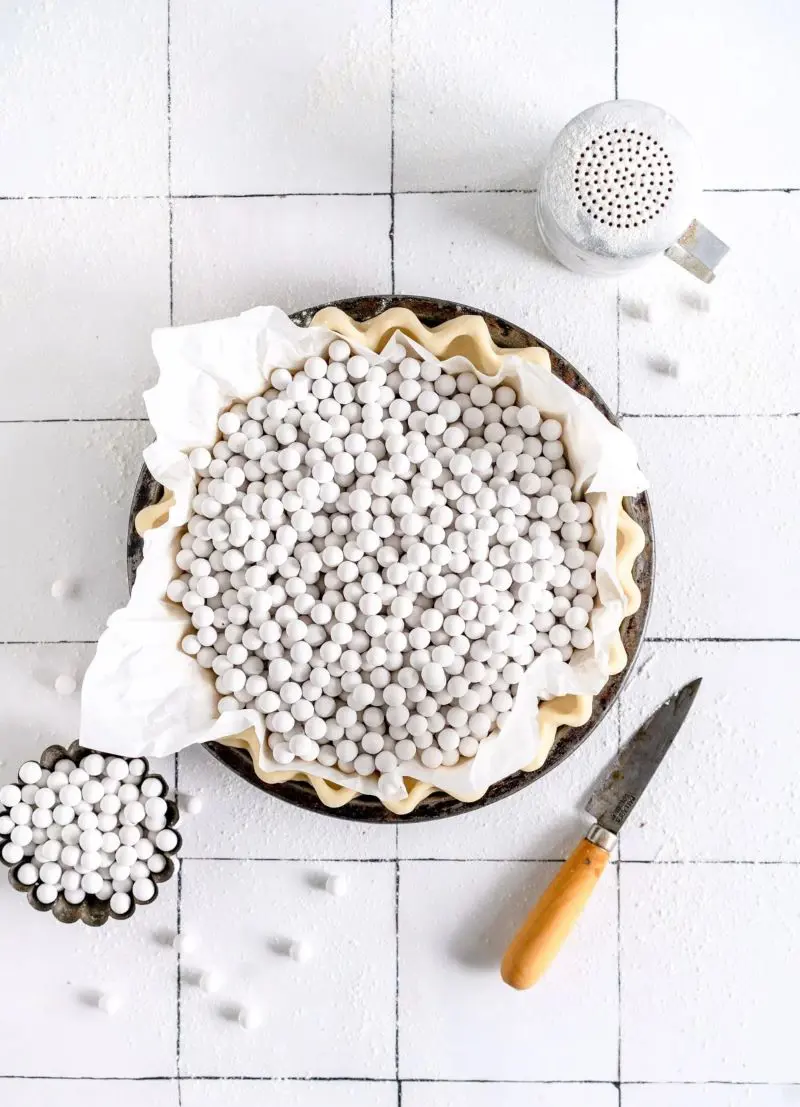
Note: If your recipe calls for a partially blind-baked crust (also known as par-baked), bake the crust with weights for 15-20 minutes, then remove the weights and bake for another 5 minutes, just until the bottom is set and no longer doughy.
Success Tips for Perfect Pie Crust Recipe
- Use Cold Ingredients: Keep your butter, shortening, and even your flour chilled. Cold fat creates a flaky texture by forming small pockets of fat that turn into steam during baking.
- Measure Accurately: Measure flour by spooning it into a measuring cup and leveling it off with a knife. Too much flour can lead to a dry crust, while too little can result in a soggy texture.
- Handle the Dough Gently: Avoid overworking the dough. Mix just until the ingredients are combined and the dough begins to come together. Overworking develops gluten, which can make the crust tough.
- Use a Light Touch: When transferring the dough to the pie dish, use a light touch to avoid stretching or tearing. Drape the dough over the rolling pin or fold it into quarters to help with transfer.
- Dock the Dough: Use a fork to prick the bottom of the crust before baking. This prevents bubbles and ensures even cooking.
- Watch for Doneness: Keep an eye on the crust as it bakes. If the edges start to darken too quickly, cover them with aluminum foil or a pie shield to prevent burning.
- Cool Properly: Allow the pie crust to cool completely before adding the filling or serving. This helps the crust set and ensures a crisp texture.
Troubleshooting Common Pie Crust Problems
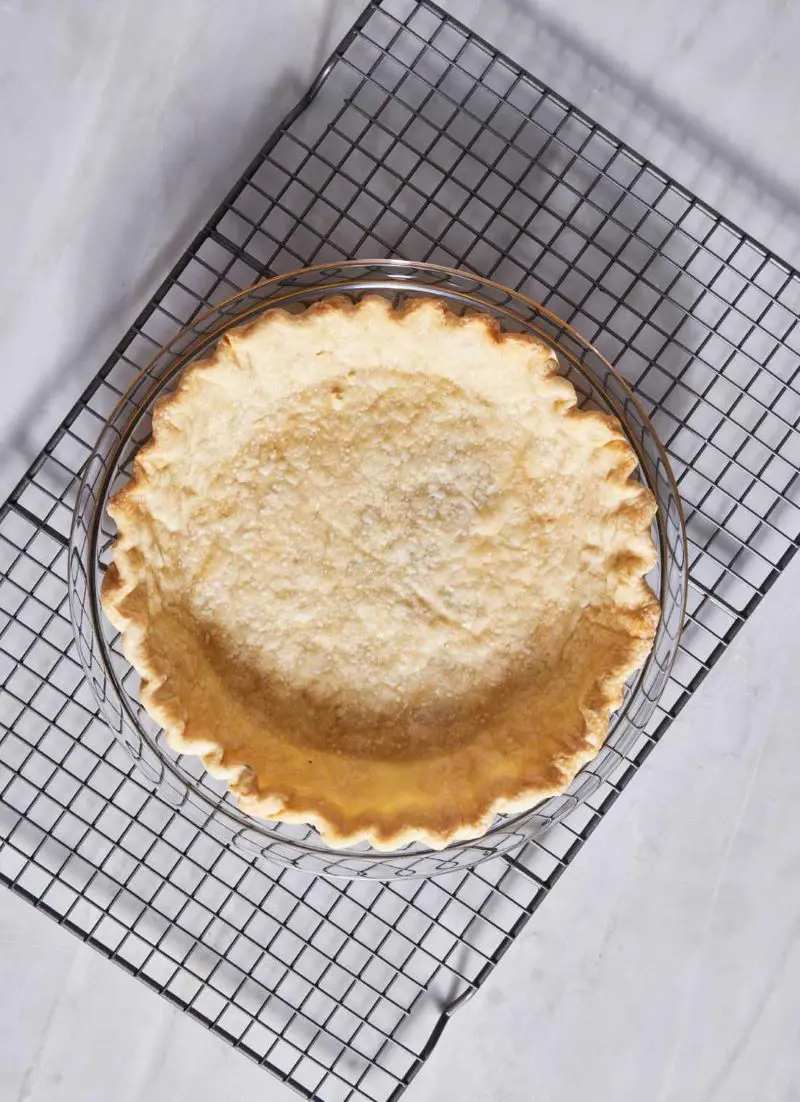
- Crust is Too Dry and Crumbly: Add a bit more water. Sprinkle a tablespoon of ice water over the dough and gently mix it in. Repeat until the dough holds together when pressed.
- Crust is Too Wet and Sticky: Add a little more flour. Sprinkle some flour over the dough and gently mix it in. This will help absorb excess moisture and make the dough easier to handle.
- Crust Shrinks During Baking: Make sure to chill the dough before baking. If the dough is too warm, it can shrink. Also, don’t stretch the dough too much when placing it in the pie dish.
- Crust is Tough: Avoid overworking the dough. Mix just until the ingredients come together. Overmixing develops gluten, which makes the crust tough.
- Crust is Soggy: Make sure to bake the crust until it’s golden brown. If using a wet filling, consider blind baking the crust first to prevent sogginess.
- Crust Bubbles Up: Use a fork to dock the bottom of the crust before baking. This creates small holes that allow steam to escape, preventing bubbles.
Can I Freeze Pie Dough
Yes, you can freeze pie dough, and it's a great way to prepare ahead of time. To freeze, wrap the dough tightly in plastic wrap and place it in a freezer bag or airtight container. It’s best to freeze the dough in a flat disk shape for easy rolling later. Pie dough can be frozen for up to three months.
When you're ready to use it, move the dough to the refrigerator and let it thaw overnight. Once thawed, roll it out as you normally would. Freezing pie dough helps you save time and ensures you always have dough ready for a quick pie or tart.

